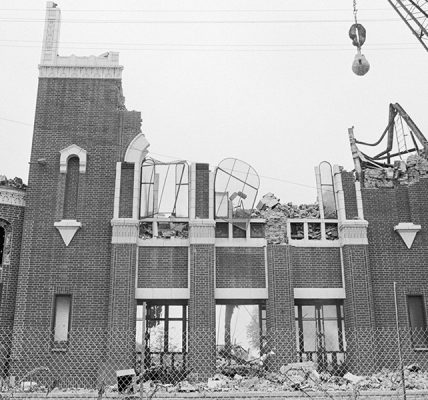High-speed flooding in Georgia and the Los Alamos-Rubio County, South Carolina, reported by the Associated Press and the National Weather Prediction Center
There has been a lot of flooding in western North Carolina, as reported by member station WFAE. The National Weather Prediction Center has forecast 6 to 12 inches for the region, well above the landslide condition threshold for the area.
The storm caused a lot of damage to the coastal homes and small buildings, as well as the agricultural fields.
In North Carolina, the rain totals Friday afternoon were staggering: almost 30 inches for Busick, N.C., and nearly 24 inches for nearby Mount Mitchell State Park, some 55 miles away.
Atlanta has had its highest 48 hours of precipitation on record over the past two days. The Georgia Climate Office set a new rain record on Friday with over 10 inches of rain, beating the previous record of 9.9-99. Record keeping began in the 19th century.
In North Carolina, Helene produced unusually heavy winds — up to 140 mph — on land, the strongest observed in coastal North Carolina since the start of modern meteorological recordkeeping in the 19th century.
The death toll in Georgia was 15 according to the governor’s office. Some children are dead, according to local CBS station 13WMAZ. Emergency management officials confirmed that two Georgians died in Wheeler County after their trailer was picked up by a tornado.
At least 52 people were killed in five states, including Florida, Georgia, North Carolina, South Carolina and Virginia, the Associated Press reported. Three firefighters were among the dead, as was a mother and her babies, and an elderly woman who was struck by a tree.
In Tennessee, over 50 patients and staff were stuck on the roof of Unicoi County Hospital in Erwin, as floodwaters rose on Friday morning. They were finally rescued by the afternoon.
The National Weather Service issued a warning through Friday afternoon instructing those below the Lake Lure Dam to leave immediately due to fears of the dam’s failure.
Brigadier General Daniel Hibner with the Army Corps of Engineers said dam failures are to be expected in flash flooding events like this one. He said at a press briefing that it was not uncommon to see a dam failure like this. “I would be surprised if there weren’t multiple (dam failures) throughout this area.”
As of Friday evening, the dam remained intact. In an update on their social media, county officials said the water levels were beginning to come down.
A Category 4 Hurricane Laura that Made Landfall Wednesday Night in the Florida Panhandle and Southern Appalachians as a Catastrophic Cyclone
According to poweroutage.us, more than 4 million homes and businesses in five states were without power on Friday. The number went down to about 3.8 million by nightfall.
To avoid carbon monoxide poisoning, consumers are advised to keep generators at least 20 feet away from the home. There were more deaths associated with Hurricane Laura because of improper portable generator use.
The storm surge was 5 feet in the Gulf Coast of Florida. Andrew Swan, 31, rode out the storm in Madeira Beach, Fla., watching over a friend’s house. He said he had to sleep on a kitchen counter because the water gushed into the house up to his chest.
As the worst of the storm is over for a lot of the Southeast, officials are warning people to stay safe in the aftermath because of flooded and debris-strewn roads.
Preliminary post-landfall modeling showed the storm surge reached 15 feet above ground level in the Big Bend area near Keaton Beach, Steinhatchee and Horseshoe Beach, the National Weather Service said.
The National Hurricane Center has the maximum sustained winds at 25 mph. The storm made landfall Thursday night in Florida’s Big Bend region — the nexus of the Panhandle and peninsula in the state’s northwest — as a Category 4 hurricane with maximum sustained winds of 140 mph.
“The expected slow motion could result in significant flooding over the Ohio and Tennessee Valleys, and over the southern Appalachians through the weekend,” the center said in a late morning update.
Life-threatening flooding and landslides in parts of southern Appalachia were expected to continue into the evening, the National Hurricane Center said.
Helene weakened to a post-tropical cyclone on Friday evening but continued to unleash “catastrophic” flooding in the southeastern U.S. and southern Appalachians, forecasters said.
A storm-induced flooding caused by a tropical hurricane, and its aftermath in North Carolina, according to an NPR-Newton meteorologist
Brad Johnson, who studies erosion and debrisflows at Davidson College, told NPR member station WUNC that debris flows can travel long distances, which is a concern to him.
“I mean everybody is just kind of in shock and just trying to pick up the pieces. Swan said nobody expected it to be like this. As the waters rose, Swan said he slept on a kitchen counter with his legs draped over his stove.
The beaches along the coast were out of bounds due to rescue and recovery operations. NPR member station WUSF reporter Stephanie Colombini spoke to some residents who ignored restrictions. Andrew Swan, who lives in a house near the beach, told Colombini he rode out the storm alone, with waters rising up to his chest.
The White House said it had approved emergency declaration requests from the governors of Alabama, Florida, Georgia, North Carolina and South Carolina, giving the Federal Emergency Management Agency, or FEMA, authorization to provide emergency response assistance. Some 1,500 federal disaster response personnel had also been deployed to the region.
Moody’s Analytics said Friday it expects $15 billion to $26 billion in property damage from the hurricane, which by late Friday had been downgraded to a tropical storm.
More than 3 million people were without power in the US and Europe on Saturday, and there was a continuing threat of floods.


